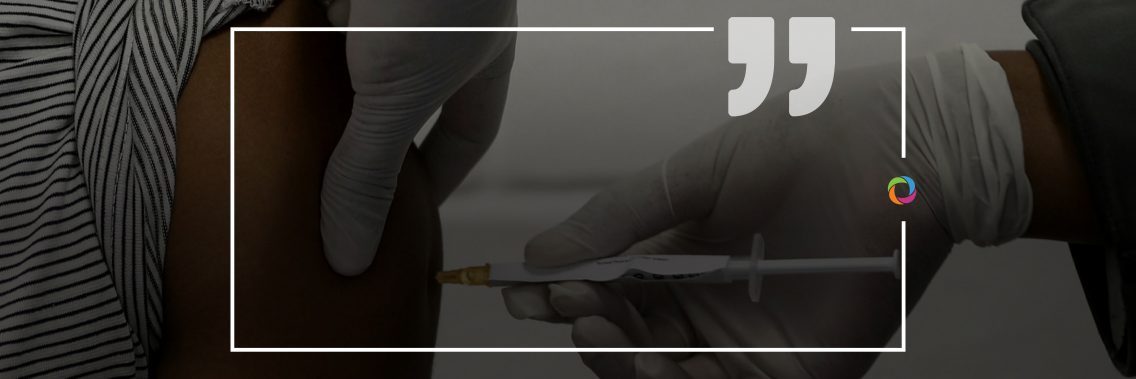Although COVID-19 vaccination campaigns have been launched in almost all developing countries, the current crisis is exacerbating inequalities around the world with many developing countries still yet to have a shot in the arm. This situation indicates that income level and other economic indicators correlate negatively with vaccine preparedness. Are developing countries ready to roll out COVID-19 vaccines? Check out some global health experts’ opinions.
As an expert coming from a developing country, what are some of the key obstacles standing in the way of vaccination?

“As of November 2020, according to the World Health Organization‘s COVID-19 vaccine readiness assessment tool, the African region had an average readiness score of 33-35% for a COVID-19 vaccine rollout which was below the desired benchmark of 80%. However, COVID-19 vaccination campaigns began in Africa in January-February 2021. Countries are now facing a wide range of obstacles related to planning and coordination, resources and funding, vaccine regulation, logistical capacity, communication and community engagement. Indeed, with the beginning of the vaccination program, African health systems are severely challenged by weak vaccine regulations and guidelines and monitoring and evaluation tools, the lack of (well-equipped and trained) health providers, a difficulty in identifying priority populations for immunization (for example no reliable data on the number of old people), the lack of reliable storage facilities (little or no electricity to maintain the cold chain needed to transport vaccines), limited access to health facilities for a large part of the population, the persistent insecurity in some areas of Africa (like northern Nigeria/Cameroon/Mali) and increased crime in other areas that could also hinder the delivery of vaccines to communities (medical personnel deployed to deliver the vaccines in these areas could be exposed to danger as they could be attacked by extremists). Also, there is a vaccine scepticism in some communities regarding COVID-19.”

“Many African countries have accessed the COVID-19 vaccine through COVAX and have begun vaccinating their populations. Despite the awareness campaigns and reassurance from the international community and national governments that the vaccines are safe, the vaccination initiatives still face several obstacles in Africa. Firstly, the misinformation around the vaccine has made many Africans believe that the vaccine is unsafe. This belief is due to earlier information provided by many Western countries that the AstraZeneca vaccine was not safe and that it likely leads to blood clots. This information led to public mistrust despite clarification by many institutions, including the European Medical Regulator, that the vaccine is safe. Also, religious indoctrination has affected citizens’ mindset as many Catholic and Muslim followers have always been suspicious of any new vaccine, and the COVID-19 vaccine is no different. Secondly, the lack of preparedness in rural areas is an obstacle as the vaccine is majorly provided in higher-level facilities that require community members to incur travel costs to access. Also, travel expenditure is less of a priority as many citizens have lost income due to COVID-19.”
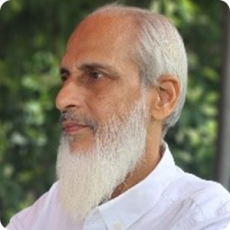
“During the COVID-19 pandemic, the world has been successful in the rollout phase of the vaccines that protect against severe disease and may enable a drive towards herd immunity. In Pakistan, the major challenges for the vaccination program are arrangements that include the procurement, logistics, and deployment to ensure accessibility, funding through external aid, or huge revenue generation, as the majority of the vulnerable population cannot afford the cost. Additionally, the Government here may face a scarcity of supplies, as will other developing countries, and this coupled with the large volumes of pre-orders made by richer countries creates challenges to achieving timely, universal access. Due to these reasons, the majority of the population may not have access to vaccines during 2021.”
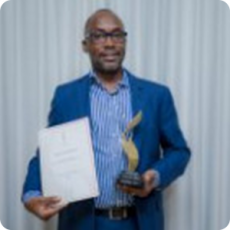
“A true recovery from COVID-19 will only happen once everyone, everywhere has access to testing, treatment, and vaccines. In my opinion, three of the biggest threats facing the global vaccination effort are: 1. Funding Gap – There is currently a US$27 billion funding gap for the Access to COVID-19 Tools (ACT) Accelerator which aims to ensure equitable access to tests, treatments, and vaccines around the world; 2. Vaccine nationalism – when countries insist on using their leverage and resources to vaccinate their own citizens before other countries receive vaccines: that’s vaccine nationalism; 3. New COVID-19 variants – health facilities are becoming overwhelmed as new, more contagious variants of COVID-19 spread across Africa, the WHO notes. The rapid spread of highly contagious strains further highlights the need for fair vaccine distribution otherwise new and more dangerous mutations could emerge that render existing vaccines ineffective”.

“With the pandemic in full swing in developing countries, both in terms of infections and deaths, vaccination is becoming the only way to slow down the evolution of the virus. The rush by so-called developed countries could or already does constitute a first obstacle to the supply of vaccine to countries with limited resources. The ability of African countries to obtain supplies on the market is thus compromised under these conditions if there is no global solidarity. A second obstacle to vaccination in Africa is the social acceptability of the vaccine. Debates about vaccine efficacy, side effects, and conspiracy theories are all things that limit or could limit vaccination in African countries if effective information and misinformation campaigns are not conducted.”
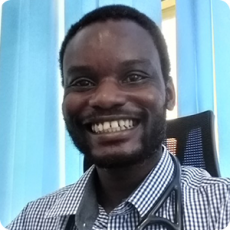
“The two key obstacles are limited vaccine supplies and limited uptake of the available COVID-19 vaccine doses. Regarding the first obstacle, Kenya is heavily reliant on the COVAX platform to access the vaccines as well as donations from various countries. From the COVAX platform, Kenya received 1.02 million doses in late February and, two weeks later, received a donation of 100,000 doses from the Indian Government. These vaccines were earmarked for healthcare workers, frontline staff (members of the security forces, teachers, and institutionalized populations such as prisoners), and people aged 58 years and above. In a country of 53 million people, where roughly 5% of the population are aged 58 years and above, they require 5.3 million doses to fulfill the two-shot injection and an equivalent number to fulfill the doses needed for the other priority group, thus requiring a minimum of 10-15 million vaccines to cover these groups. Regarding the second obstacle, there has been minimal education and outreach to the population from the Ministry of Health and, with misinformation emanating from various social media platforms, this has further bred a lot of vaccine scepticism, hence leading to vaccine hesitancy.”
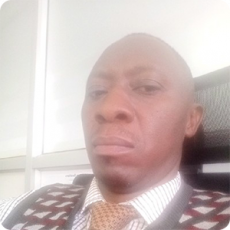
“The key challenges are as follows: A) Social media propagated myths against COVID-19 vaccinations are really having a negative effect on our population, especially when some western countries have stopped the AstraZeneca vaccine; B) Minimal doses available in the country mean that an eligibility criteria has to be used to justify the differentiated service delivery in this regard. In Uganda, they have started with health workers, teachers, the elderly, and those below 50 years of age with health complications. The challenge is that the above-mentioned myths have slowed acceptability across the population; C) Political ownership, in Uganda fortunately this is not a challenge at all.

“Access: Developing countries do not have easy access to vaccines due to the high costs of procurement of these vaccines from the West coupled with high transportation costs that have been heavily impacted by the epidemic itself. Budget constraints: Access is further hampered by the compressed economies of these developing countries that do not leave them with enough “disposable income” to spend on the procurement of vaccines amidst the many livelihood challenges some of which have been brought about by the epidemic itself. Supply Chain Management: Budget constraints manifest themselves in the country as well in terms of weak supply chain management that is more adversely affected by unreliable cold chain management systems to take the vaccines to the people. Myths: When the vaccines reach the communities, uptake is also quite low. This is largely due to various myths that people strongly ascribe to regarding the virus and the vaccines. Some of these are that the virus only attacks the rich, educated town dwellers, that the vaccine is a way of managing the population boom that will lead to barrenness/loss of fertility, and that the whole epidemic signals the end of time. For example, here in Malawi, out of about 360,000 doses that the county received over a month ago, only a third (160,000) have been accessed with a fear that about 50,000 doses may expire by mid-April 2021.”

“When looking at vaccination for COVID-19 in developing countries, we have to learn from previous public health campaigns, including vaccinations. The significant obstacles can be loosely categorized into three baskets of behavioral factors: availability, ability, and motivation. When considering availability as an obstacle, we look at the actual number of vaccines, geographical availability, and commercialized availability by the private sector. As in previous vaccination programs, developing countries are more likely to have higher vaccination in urban areas than in rural areas. Ability covers things like self-efficacy, beliefs, and attitudes while motivation focuses on the individual’s perceived benefits against the risks. Information, specifically myths, and misconception, primarily affect both “ability” and “motivation.” Without a rigorous and evidence-based communication strategy, ability and motivation would be the most significant obstacles to vaccination. In conclusion, it is my professional opinion that once governments address the availability, the individual risk perception towards infection with COVID-19 will determine the race to sufficient immunization coverage.”
What should be done to help these countries kick-start safe and effective immunization campaigns?

“According to WHO, Africa needs 1.5 billion doses to vaccinate 60% of its population and achieve herd immunity. The COVAX initiative is supposed to allow 20% of the most vulnerable people to be vaccinated. By the end of March 2021, approximately 23.6 million doses of vaccine were distributed across Africa. According to CDC Africa, this corresponds to a continental coverage of only 1.7%. WHO and its partners should help to facilitate rapid access to safe and effective vaccines in African countries. This will require a strong mobilization of resources to procure vaccines, laboratory kits, and equipment and personal protection supplies including masks, gloves, and other kits to protect health workers. African countries also need capacity building in training for health professionals in surveillance, case management, laboratory diagnostics, and incident management systems. In addition, they need support for the establishment of the regulatory framework to authorize vaccine use, the identification of priority population groups to be vaccinated (indeed, for example, there is no reliable data on the number of old people), the establishment and maintenance of a cold chain at all levels, from the arrival of the vaccine at the port to the arm of the beneficiary and the creation and maintaining of a community engagement.”

“The best solution to help countries to enhance effective immunization campaigns is to fight misinformation and conspiracy theories about the COVID-19 vaccine. Governments need to target their messaging at both the national and community level to fight the misinformation. Besides, as many young populations have access to the internet in Africa, the governments should use social media to run campaigns that neutralize the false accusations and encourage many citizens to take up the vaccine. Governments should also consider a multi-sectoral approach to fight misinformation by collaborating with religious leaders and opinion leaders among others. The establishment of an emergency helpline or hotline will further strengthen the information flow and bridge the gap in the lack of information on vaccine centers. On transport costs related to accessing facility centers in rural areas, regional government representatives should cooperate with local administration officers at the community level to use existing structures such as market days and chief barazas meetings to provide vaccines to community members who participate in such events. The World Health Organization needs to partner with governments to clear the air on the vaccine efficacy and the anticipated side effects. Such initiatives will create the trust of citizens and improve the uptake of the vaccine.”

“To kick start a safe and effective immunization campaign, the correct knowledge must be disseminated through multiple communication channels such as mass media, FM radio, social media platforms, health care providers, religious leaders’ speeches or sermons, and political leadership. Consensus and uniformity of messages will improve trust in the information.”

“In order to kick start, we need more than better messaging and better playbooks. We need a movement. We need to challenge the systems of practice that lead to mistrust and disappointment in health care more broadly, building on health social movements like eradicating Polio to collectively drive the equitable uptake of COVID vaccination. The most important thing in ending the COVID-19 pandemic is global collaboration — specifically ensuring that everyone, everywhere has access to the tools needed to fight the coronavirus including vaccines, treatments, and testing. It is critical that the world’s richest countries ensure the world’s poorest have access to vaccines by supporting COVAX and ACT-A, donating surplus vaccine supplies, and supporting vaccine manufacturing efforts. And people everywhere must be confident in the vaccine and get it as soon as they have access.”

“In order for countries to succeed in their immunization campaigns, it will be necessary to implement immunization plans that take into account the realities of the countries, ensuring the existence of logistical and other means for the conservation and distribution of vaccines. Train the actors involved in immunization. It will also be necessary to raise the awareness of the population, especially the people of the first contact and/or vulnerable people, about the need to be vaccinated and the associated benefits. African countries should also ensure transparency on vaccine surveillance data. Inform the population about the benefits of immunization in order to promote their acceptance.”

“The most important aspect in my view is educating the population on the benefits of the vaccine. In Kenya, most of the vaccination outreaches have been through television and in English, yet most of the vulnerable populations that the vaccine could benefit live in the rural areas of Kenya with minimal to no access to television, and the majority do not understand English. Thus, vernacular radio stations in these areas should be utilized and should invite experts familiar with the local language of the area who can break it down in the simplest way possible. Local community elders, such as members of the clergy and tribal chiefs, should be educated and encouraged to motivate their followers to be vaccinated. Countries, especially the high-income ones that have vaccinated the majority if not all of their vulnerable populations, should be encouraged to donate their extra vaccine doses to low- and middle-income countries so that they are able to also protect their vulnerable population as well before they embark on vaccinating other adults who may not be at risk of developing severe disease or death.”

“Looking at the situation in Uganda, what we need is: 1. Focused support for the Ministry of Health of the country and all development partners to fight the COVID-19 vaccine myths being propagated online etc. Currently, USAID is doing a wonderful job in this regard, 2. The main challenge is getting an ample supply of vaccines for all eligible persons. Currently, at least 1 million doses are already in the country with more expected.”

“Developing countries should prioritize their fiscal allocations towards supporting the procurement of vaccines, management of the supply chain and cold chain systems. Developing countries should develop contextualized communication strategies and investment in these would aim to debunk myths surrounding the epidemic and the vaccines themselves. Evidence-based communication strategies would also be quite appealing to the populace whereby facts and figures should do the talking.”

“Considering the movement restrictions that governments have employed in many countries, populations adopted alternative sources of information besides the traditional radio and television. It would be essential to consider this changing media source landscape when considering an effective immunization campaign. Another key element would be rethinking the trusted information sources regarding COVID-19 and addressing these in the campaign. As a champion of evidence-based health programming, I propose that the immunization campaign identifies and incorporates the actual behavioral issues”.
Check out more than 650 job opportunities in the Health sector here.
